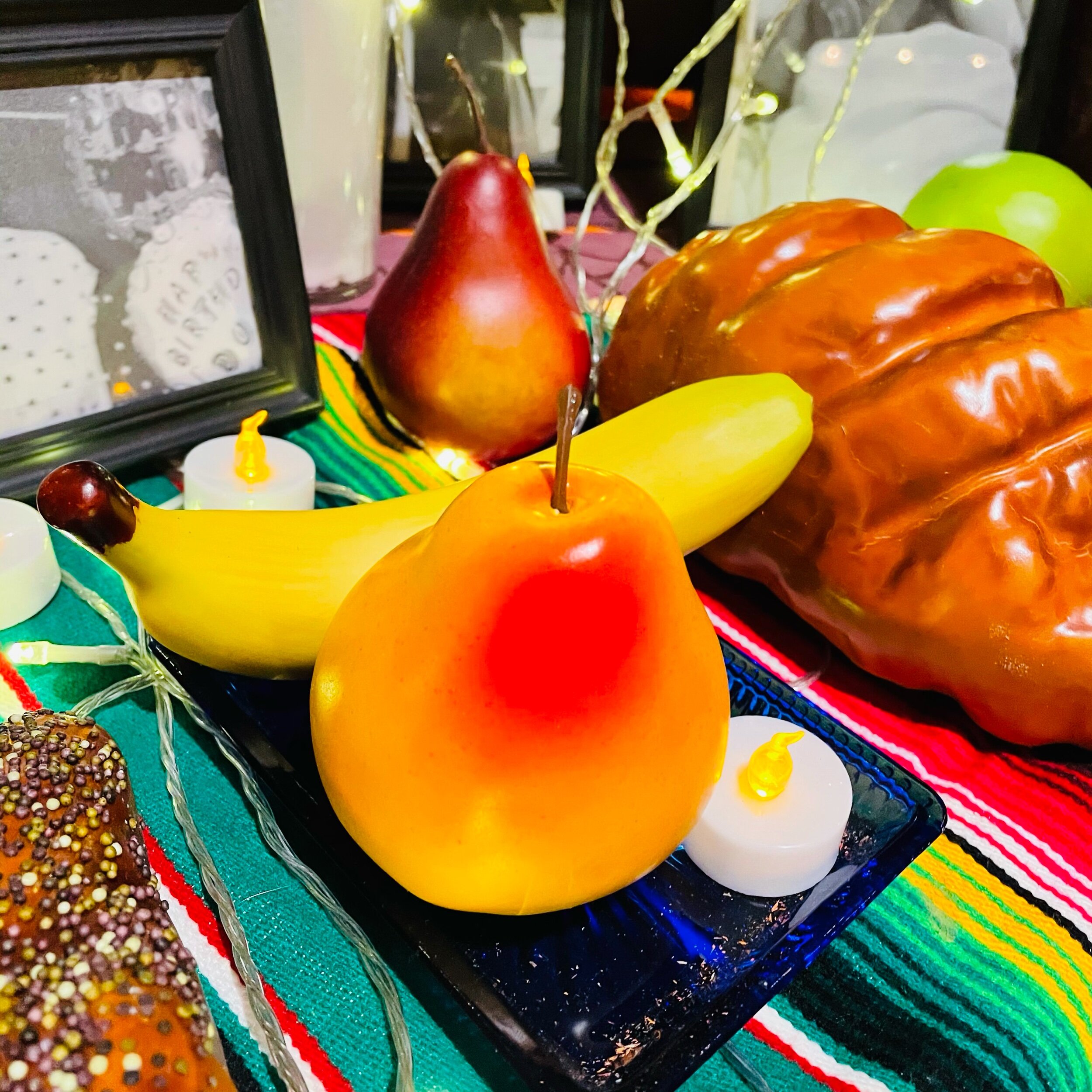Día de Muertos is not the same as Halloween
Día de Muertos originated in Mexico and Central America
Día de los Muertos originated in ancient Mesoamerica (Mexico and northern Central America) where indigenous groups, including Aztec, Maya and Toltec, had specific times when they commemorated their loved ones who had passed away. Certain months were dedicated to remembering the departed, based on whether the deceased was an adult or a child.
After the arrival of the Spanish, this ritual of commemorating the dead was intertwined with two Spanish holidays: All Saints Day (Nov. 1) and All Soul’s Day (Nov. 2). Día de los Muertos is often celebrated on Nov. 1 as a day to remember children who have passed away, and on Nov. 2 to honor adults.
Today, Día de los Muertos is celebrated mostly in Mexico and some parts of Central and South America. Recently it has become increasingly popular among Latino communities abroad, including in the United States.
Ofrenda Elements
Portrait of the Deceased
A photo of the deceased for which the altar is paying tribute is placed at the top and in the middle of the altar. Images of saints serve as reminders of their role as intermediaries between the living, the dead and the “beyond.”
Alebrijes
Alebrijes are animals that escaped the nightmares of an artist and appear as a variety of different species – both real and fantastic and native to the Valley of Oaxaca in Mexico.
They are rare and unique animals that hold a special place of being a spirit guide. You will not find any 2 that are alike and they are each different with their vibrant colors, and details throughout such as patterns, stripes, shapes, facial expressions and more.
Sugar Skulls
As an example of the enlacing of pre-Hispanic and Christian elements that combine to define this tradition, the small sugar skulls symbolize Miquiztli, the God of death, as well as representing the victory of the Trinity. Sugar skulls typically have the name on the deceased on their forehead, are one of the most common items placed on the altars or offerings.
Copal
The special fragrance of this ancient origin resin from a tree of the same name, has two meanings: the first is to purify the place of evil spirits where the altar is located, and the other is a connection with the sky – it is believed that as the aromatic smoke of the copal rises, it makes a connection with the dead.
Fruit
This is to delight the soul, to include seasonal fruits such as apples, pumpkin, hawthorn, sugar cane, jicama, etc.
Other Food and Beverages
The altar will include beverages, dishes and casseroles that the deceased enjoyed on earth. In addition to pleasing the departed, this element helps to recall memorable aspects of the deceased, and often include pulque, liquor, chocolate, tequila, wine or posole, a drink made from corn and honey.
Salt
It is believed that during the journey of the afterlife, the salt will prevent the body of the departed from breaking down as it travels along the winding road to eternity.
Water
Representative of the purity of the soul, and it is believed that the water will quench the thirst of thirsty spirits, to reinvigorate their energies for their journey into the beyond.
Pan de Muertos (Bread)
The most common food offering for the spirits, the most commonly used form of bread is called “pan de muerto,” (bread of the dead), a round loaf of bread that may be adorned in three colors in the forms of quills and bones, and then sprinkled with white sugar.
candles
Candles, which are typically in a glass container adorned with the image of a saint, serve as a guide to light the deceased’s way in the ascension of the spirit.
Marigolds
The Cempasuchil is the bright yellow Mexican marigold, also known as the flor de muerto, is the main floral adornment for gravesites and altars.
Its strong scent and bright color (said to represent the Aztec sun god Tonotiuh) are believed to be an attraction to the spirits of the deceased as they come to visit their family on the Day of the Dead.
Source: https://explore-sonora.com/dia-de-los-muertos-in-sonora/day-of-the-dead-altar-elements/
Monarch butterflies
Play a role in Día de los Muertos because they are believed to hold the spirits of the departed. This belief stems from the fact that the first monarchs arrive in Mexico for the winter each fall on Nov. 1, which coincides with Día de los Muertos.
Papel Picado
These are the colorful tissue paper rectangles that are cut to display Dia de Muertos designs and hung from string above altars, and places on the front and sides of altars









